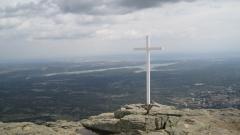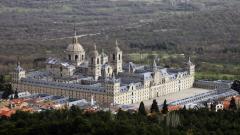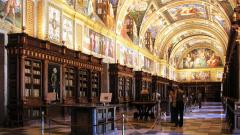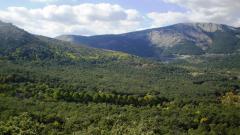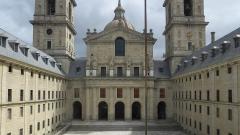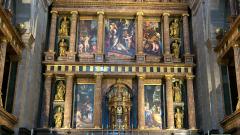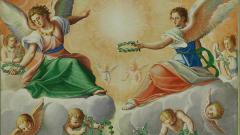The Escorial
San Lorenzo de El Escorial is a municipality in the province of Madrid, about 50km away from the capital, has an approximate population of 18,024 inhabitants collected in 320 km2. It is located in the range of Guadarrama, on the southern slope of Mount Abantos.
The municipality was raised at the request of Felipe II, who, attracted by the natural environment of the area, with fantastic forests for walking, hunting and other recreational uses decided to create a Crown territory, acquiring contiguous territories and include it within its network of Real Sites. In 1563, the construction of its well-known Monastery began, around which the city was formed, and only two years later would become in a Royal town. The build process concluded in 1586, its intention was to serve as a royal mausoleum and accommodation for the king and his entourage, who lived throughout the autumn, as well as for the monks of the Order of St. Jerome. He had a school, a seminary and a library, with one of the most relevant bibliographic collections worldwide, his collections of Arabic, Hebrew and Latin manuscripts are especially valuable.
Surrounding the main monument, we can observe a slice and three gardens, (the private King's Garden, the Friars' Garden and the Convalescents’.) and an orchard that is watered thanks to the Big Pond that is next to the last garden. This space is the maximum exponent of the concept that the king had of gardening, should provide beauty and to be a cultivation area, to ensure the supply to the religious community and courtiers. In addition, thanks to its location, they constitute an excellent viewpoint, not only of the El Escorial’s orchards, but also we will be able to see a good part of the Community of Madrid, and the ramp of the mountain range together with the local plain, just at glance.
In the central facade, we can see the family shield of Felipe II and a statue of San Lorenzo. In its interior is the Picture Gallery, the Museum of Architecture, The Basilica, and The Royal Courtyard are must-see places. Internationally renowned painters such as El Greco, El Bosco or Tintoretto decorated the Chapter Rooms, once used by the monks. The Pantheon of the Kings it is the place of rest of almost all the Spanish monarchs from Carlos V.
Monastery apart, El Escorial has a profuse architectural heritage, which is one of the most powerful attractions of the” Villa”, we must highlight the Prince's House and its fantastic wooded gardens, “ The houses of the trades, the House of the Infant and the Company Quartes. All of them, considered World Heritage by UNESCO. Other important are, the Royal Coliseum Theatre of Carlos III, The House of Jacometrezzo, The House of the Duke of Alba, The Stables of the King, The Auditorium Theater or The House of the Duke of Medinacelli, are just some of the buildings that we can see and that form part of the Historical Ensemble of the municipality, established as a Cultural Interest Site in 1971.
The Real Site enjoys an idyllic natural ecosystem, optimal for the practice of active tourism, The woods of “La Herrería” and Abantos was declared Picturesque Spot, including all the zone, in the Natura 2000 Network as a Site of Community Interest and Special Birds Protection Area (SBPA).
La Herrería offers us a great diversity of fauna (vultures, peregrine falcons, cormorants, roe deers, wild boars, otters ...) and floral (oaks, maples, ash, chestnut) that we can enjoy walking through several paths and routes.
At the foot of the forest we find The Seat of Felipe II, a set of stones with chair-shaped that serves as a lookout, offering a wonderful panoramic view of El Escorial and Mount.
As part of the Route GR-10 we find The Abantos Pine Forest located at almost 1800m, it is a place of reference for mountain lovers who live in the Community, where all kinds of varieties of this tree are present.
In addition to the hiking routes, we can roam the place by bicycle routes, a photographic "hunt", or play golf at the Real Club de la Herrería.
It has some multimedia services, which make the tourist experience more interactive, a virtual reality app, which, by downloading, allows us to see several buildings as they were in the eighteenth century if we direct the camera of our device to them. Two webcams in real time that allow us to observe the activity in the Monastery Slice and in the Constitution Square ,also, a heritage viewer, which allows us to locate in a simple way, all the important buildings collected in the town.
For all these reasons, we understand that El Escorial has become one of the most active tourist destinations around the capital, knowing how to maximize its fantastic heritage and natural environment.

